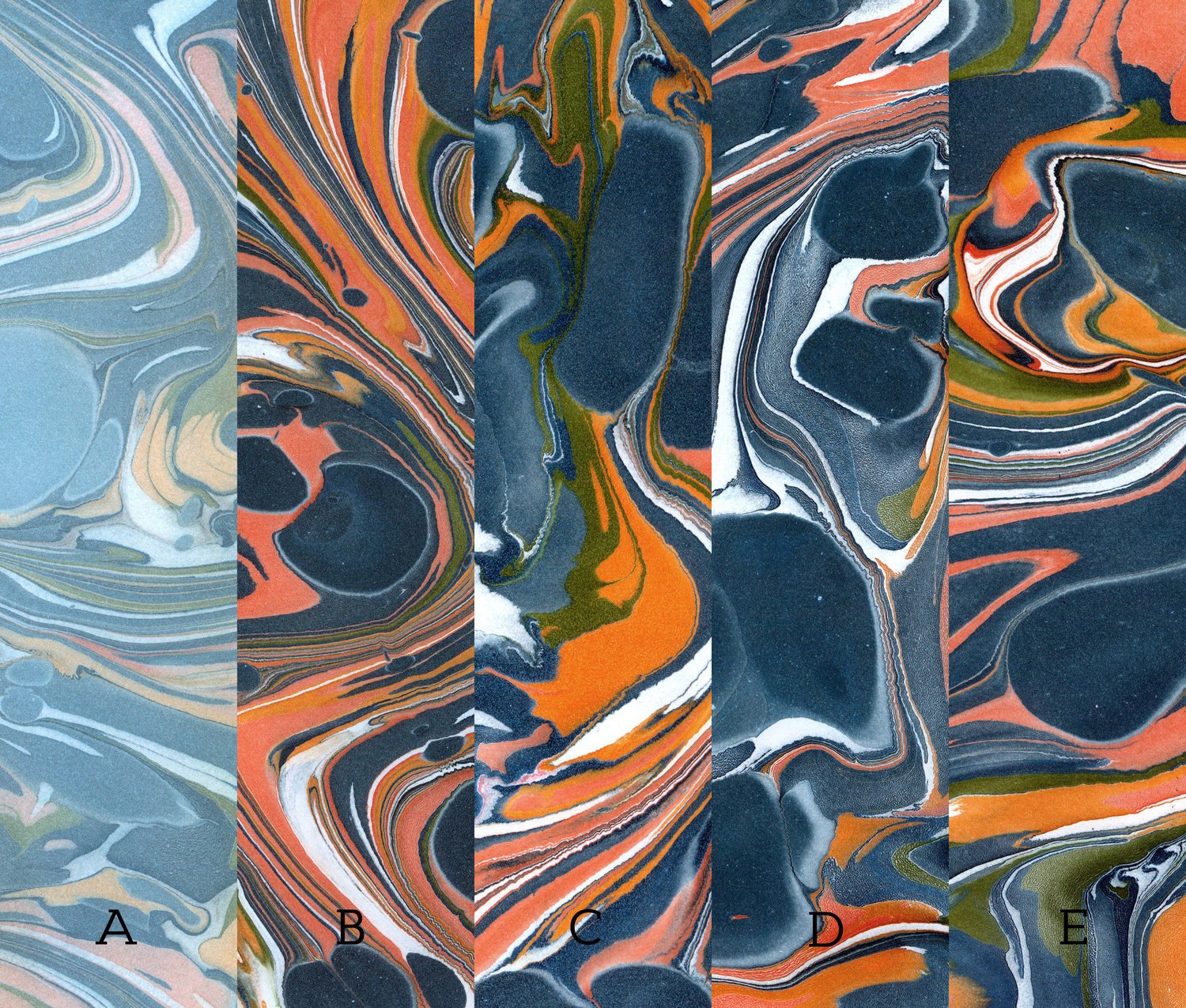alum quantity
Natalie Stopka, April 2018
When preparing paper for marbling, it is pre-mordanted with an alum solution. We discussed the role and varieties of alum in the last post, and let's continue with the question:
How much alum to use?
Marbling instructions vary greatly in the strength of the alum solution recommended to mordant paper. I've seen measurements ranging from 1.5 teaspoons to 5 tablespoons per pint of water. Let's investigate just how much is enough to make a successful print.
What can go wrong?
If too little alum is used, marbled designs made with watercolor or acrylic pigments cannot bond to the paper. Western-style papers used in the European marbling tradition are sized to improve their durability and slow their absorbency. Alum bonded to the surface of mordanted paper is the chemical helping hand essential for linking marbling pigments to the paper fiber, and stabilizing the colors for lightfastness in the long term. Any marbler who has accidentally printed on the unmordanted back side of a sheet is familiar with the disappointment of watching their design wash down the drain with the rinse water, having no alum to hold it fast.
However, if too much alum is used, crystals may build up on the surface of the paper without actually adhering to to the paper fibers. In this case a bit of the excess alum will dissolve into the size as each print is made. If the size becomes polluted with alum, it causes the paint to clump together in a very frustrating way, and must be replaced with fresh size.* If you can feel a buildup of powder on the surface of your paper or see white streaks on colored papers, you are using too much alum.
Additionally, alum is acidic, and using a lot will both waste alum and make the paper overly acidic. Over time, this causes the paper fibers to become brittle and crack apart.
Watercolor Paint
Testing Alum Quantity
These samples, excepting sample A, were coated with a wash of aluminum sulfate dissolved in warm water:
A no mordant
B 1.5 teaspoons/pint
C 1 tablespoon/pint
D 2 tablespoons/pint
E 3 tablespoons/pint
As can be seen in both the watercolor and acrylic tests, unmordanted sample A is comparatively very pale. This was not a surprise, as it has no mordant at all. I was surprised, however, to find no discernible difference the in strength of the colors in samples B-E. Any quantity of alum from 1.5t - 3T per pint acts as a successful mordant.
Acrylic Paint
My recommendation: 1.5 teaspoons alum per pint water
I will continue using 1.5t/pint to mordant papers in future, the amount recommended in the first marbling class I took with Stephen Pittelkow. As alum is slightly acidic, I prefer to put as little as needed on my paper to get the job done. Pre-nineteenth century marblers used potash alum, but nowadays you can mordant with either potassium aluminum sulfate or aluminum sulfate - just mix it with warm tap water to ensure the crystals are fully dissolved. Some marblers soak their paper in a mordant bath, some apply the alum solution with a natural sponge or a spray bottle; I use a wide foam brush. As each sheet is coated I flip it over and pencil an X on the back. The whole stack of wet papers is weighted with a heavy board to stay flat. They can be printed in about half an hour when still slightly damp, or kept up to 4 days. I prefer to print papers within one day of mordanting.
If you've prepared your papers with mordant but the marbled design doesn't adhere, you may be using archival paper coated with calcium. Choose a different paper stock and try again.
*Of course, any mistake can become an interesting pattern when repeated intentionally! Mixing a little bit of alum into your gall water or one color of paint can give an intriguing, crunchy texture to a marbled design.

